
Hullbot: Cleaning drone for underwater hulls
Hullbot from the company of the same name is a cleaning robot for underwater hulls which, equipped with a camera system and various sensors, moves autonomously along the hull and is designed to optimally clean the keel, saildrive, bow thruster and various hull shapes. No remote control from outside is required. With several drives, the Hullbot moves like a drone in the water and cleans with rotating brushes. This allows it to remove biofilm and light fouling. The brushes can also extend sideways to clean hard-to-reach areas such as bow thruster tunnels. It also inspects the underwater hull. An AI analyses the images. If the hull is cleaned regularly, antifouling can also be dispensed with. There are already washing systems for underwater hulls. However, these are not yet very widespread and have so far mainly been able to clean motorboats, as different keel shapes and saildrives were not compatible. Hullbot is to be rented out to shipyards. A price has not yet been named.
Proxdrive: Winch becomes a pedelec
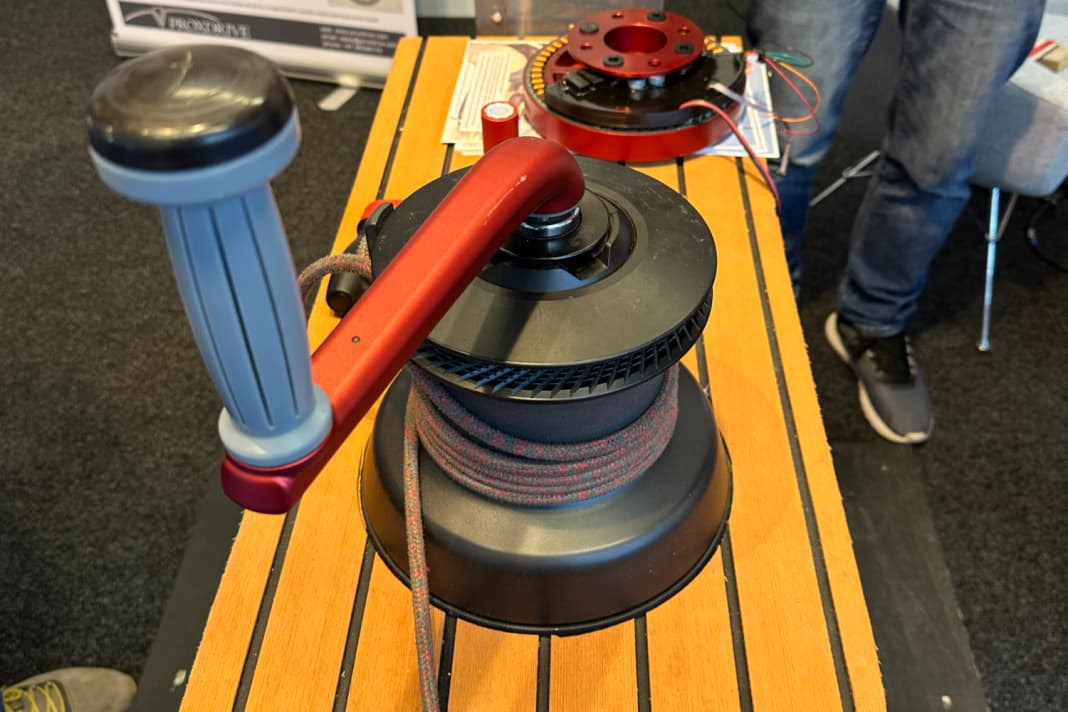




Proxdrive from Norway has developed an electric assistance system for retrofitting winches. It is suitable for any winch with a downward drive shaft and only cranks with the winch, not independently at the push of a button. This is comparable to electric drives in bicycles, which also only push when pedalling. The winch crank connects to the drive via NFC and thus activates the motor. At the trade fair stand, a lead weight could be lifted effortlessly, which required a lot of force on the crank without electric support. The system was developed for ClubSwan 50, which certainly explains the high price of 30,000 euros.
Osculati SUP Board Kit:Storage space for SUP or gangway
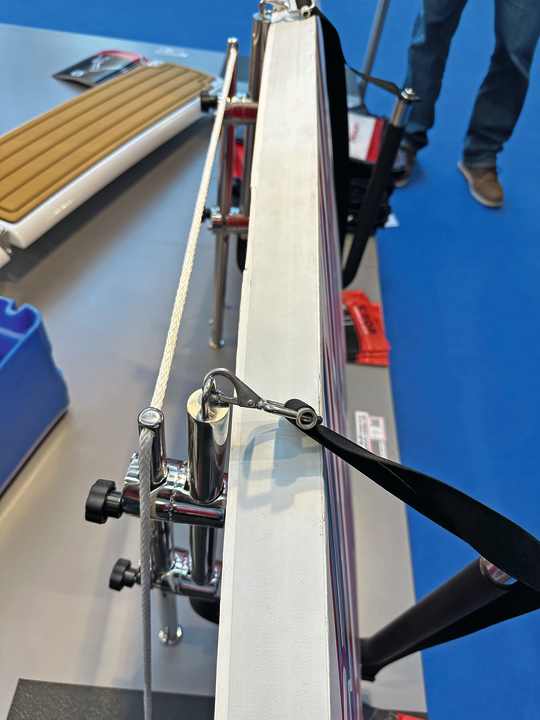
The SUP Board Kit from Osculati in Italy is a mounting system for boards or gangways on the railing. The stainless steel brackets are attached to railing supports with tommy screws. This allows the retaining brackets to be quickly released and folded away when not in use. A strap with carabiner secures the boards against slipping out. For railing supports from 20 to 28 millimetres in diameter. The price has not yet been set.
Fidlock: Small, powerful holder





In addition to waterproof bags with magnetic fasteners, Fidlock also has a new bracket in its range. The small fitting is suitable for attaching pads or halyard bags both inside and outside. The base is almost flush. As soon as the counterpart approaches, the magnet-equipped centre section comes out and hooks into place. It is released by sliding it to the side and pulling it off. Holds up to five kilograms individually.
Lopolight: Infinitely dimmable light
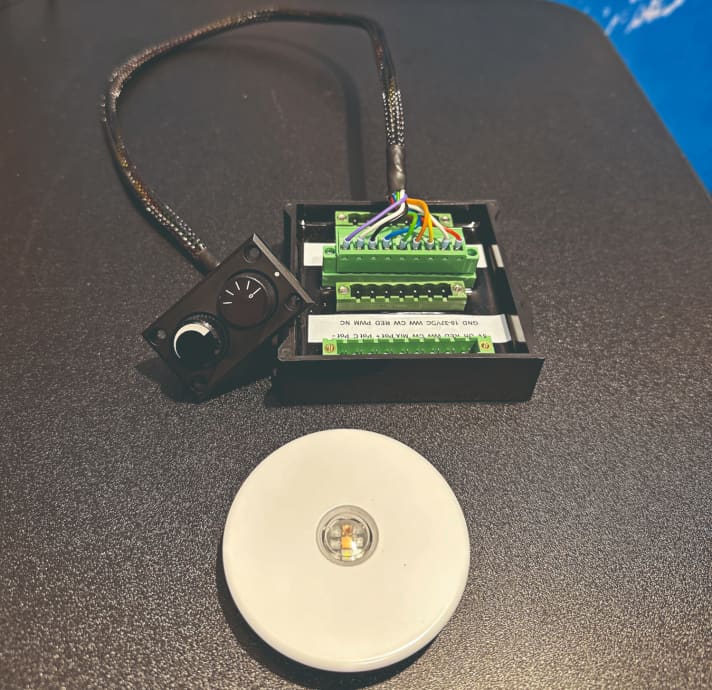
Lopolight is launching a series of particularly flat LED spotlights and the matching switching system called Control & Dimming Switch. The control unit has two rotary switches. One is used to switch between red light, warm, medium and cool white and the other is used to dim the light continuously from zero to 100 per cent. Up to 20 lamps can be connected to the distribution box. The system can be expanded with additional distribution boxes if required. The price has not yet been finalised.
Gleistein GeoProp: sbuoyant and highly visible cordage
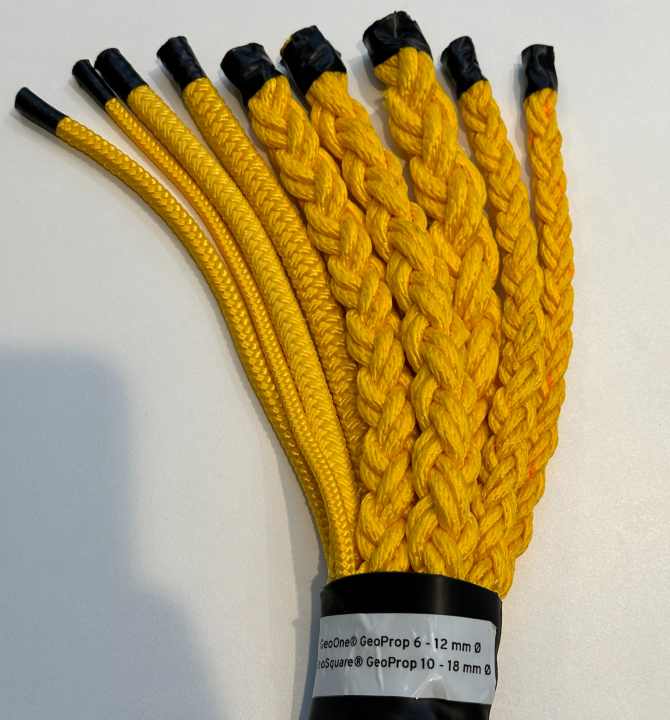
GeoProp is the name of the new line of ropes from Gleistein. The braids are suitable as mooring lines or towing lines, especially as they are made from buoyant polypropylene. GeoOne is a core-sheath braid that is available in diameters from six to twelve millimetres. The square lines, called GeoSquare (shown in the bundle on the right), will be available from ten to 18 millimetres in diameter. This special type of braid is very light and therefore takes up less space in the back box than a comparable core-sheath braid.
Liros Flat Elastic: shock-absorbing and no tines

Liros Flat Elastic is a mooring line that consists only of a sheathing braid. In practice, the rope behaves almost like webbing and is extremely soft and supple. This means that even longer lengths can be stowed away to save space. The diameter is 16 millimetres.
Liros Porto Green Wave: green mooring line
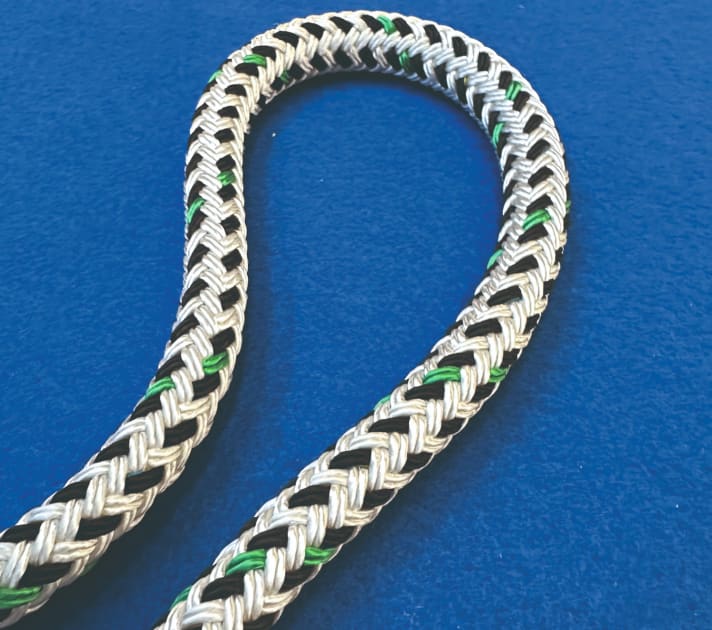
Liros uses its own Green Wave seal of approval to label products that have been produced in a climate-neutral way or with recycled raw materials. The Porto mooring lines are now also available as Porto Green Wave made from recycled polyester.

